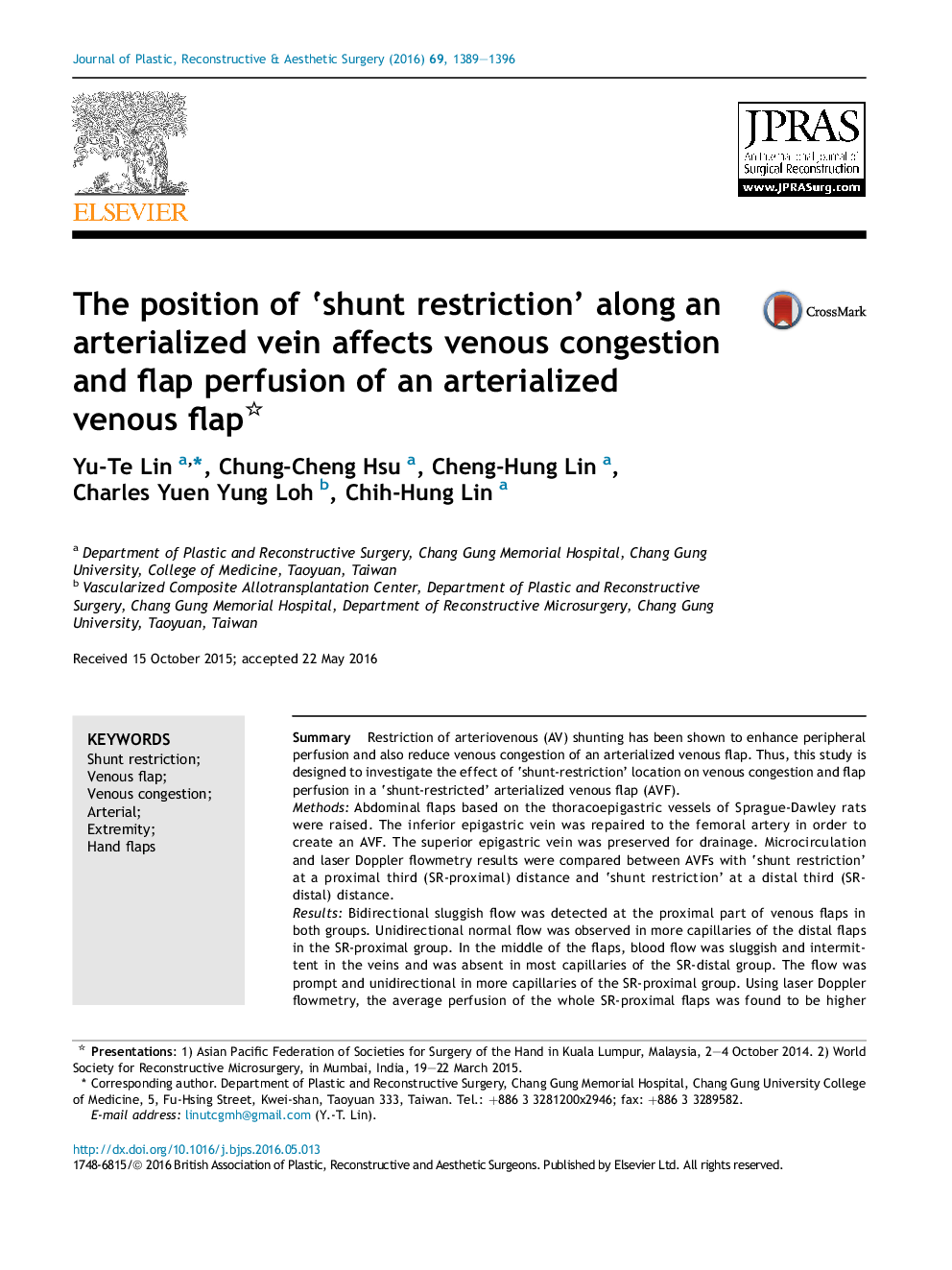| Article ID | Journal | Published Year | Pages | File Type |
|---|---|---|---|---|
| 4116947 | Journal of Plastic, Reconstructive & Aesthetic Surgery | 2016 | 8 Pages |
SummaryRestriction of arteriovenous (AV) shunting has been shown to enhance peripheral perfusion and also reduce venous congestion of an arterialized venous flap. Thus, this study is designed to investigate the effect of ‘shunt-restriction’ location on venous congestion and flap perfusion in a ‘shunt-restricted’ arterialized venous flap (AVF).MethodsAbdominal flaps based on the thoracoepigastric vessels of Sprague-Dawley rats were raised. The inferior epigastric vein was repaired to the femoral artery in order to create an AVF. The superior epigastric vein was preserved for drainage. Microcirculation and laser Doppler flowmetry results were compared between AVFs with ‘shunt restriction’ at a proximal third (SR-proximal) distance and ‘shunt restriction’ at a distal third (SR-distal) distance.ResultsBidirectional sluggish flow was detected at the proximal part of venous flaps in both groups. Unidirectional normal flow was observed in more capillaries of the distal flaps in the SR-proximal group. In the middle of the flaps, blood flow was sluggish and intermittent in the veins and was absent in most capillaries of the SR-distal group. The flow was prompt and unidirectional in more capillaries of the SR-proximal group. Using laser Doppler flowmetry, the average perfusion of the whole SR-proximal flaps was found to be higher than that of SR-distal flaps (p = 0.017). The average flux at the middle and distal portions of the SR-proximal group was significantly higher than those of the SR-distal group (p = 0.049).Conclusion‘Shunt restriction’ at the proximal third of the AV shunt resulted in enhanced perfusion and reduced venous congestion in an AVF.
